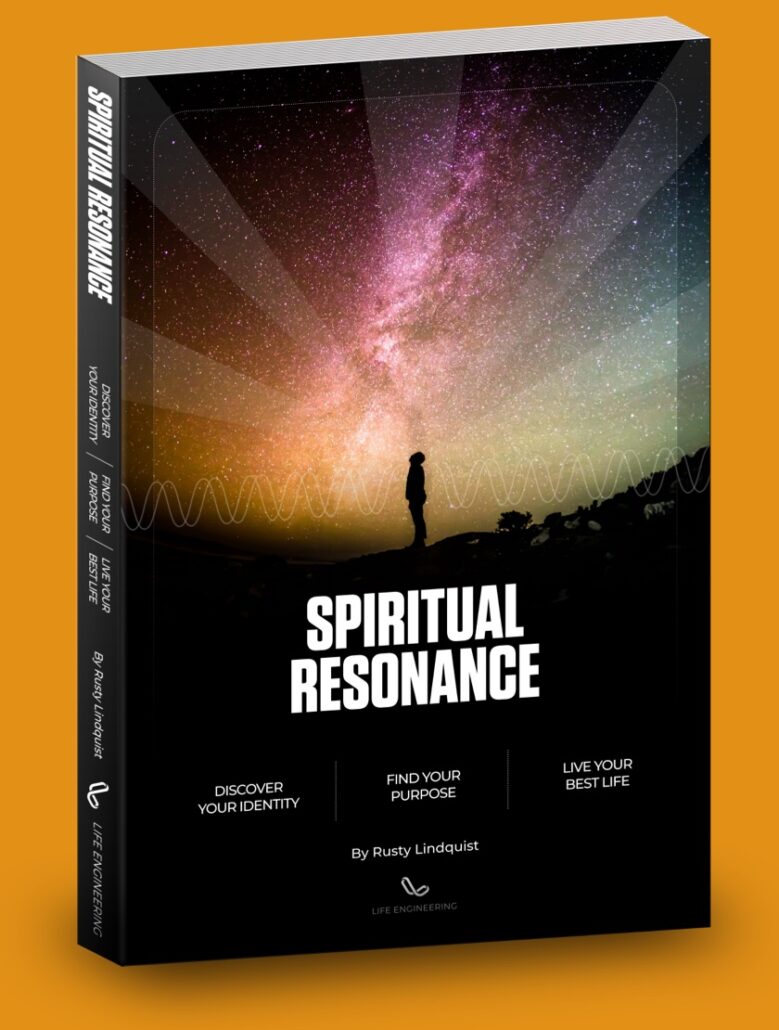Achievement Academy
CouRSES TO HELP YOU REACH YOUR FULL POTENTIAL
Courses for leaders
Leadership today is more difficult than it’s ever been. There’s a broader diversity of issues leaders face than ever before. There’s more disruption to the workplace and in the workforce than ever before. On top of it all, this is the most competitive economic battleground in history.
And through all of that, leaders are the arbiters of engagement, during a time when disengagement is the defining characteristic of today’s workforce.
The Achievement Academy for Leadership Excellence helps today’s leaders navigate that highly complex human capital landscape.
In the Leadership Academy we will arm you with state of the art frameworks, processes, principles, and tools to help you know how to build and sustain high performing, highly engaged teams, no matter what work they do.
consider a paid membership
The Performance Iceberg
Why energy matters most
When it comes to human achievement, there are really only three big variables… there’s time, talent and energy. And while we tend to focus almost exclusively on time and talent, the research is clear… between the three, energy actually matters most.
If it’s so important, the question is how well do we know how to optimize for it within our teams and organizations.
In this course we’ll talk about the interplay between these three critical components, and why learning to activate and optimize the energy inside you is likely to be the number one driver of you becoming and achieving your full potential.
Extraordinary vs Extravagant
How to become an extraordinary leader
We all know individuals who seem to flaunt their extravagant lifestyles either in person or on social media. Those who embrace lavishness and overabundance may do so at the expense of truly becoming extraordinary. When that happens in a leader, it can drive a wedge between them and those they lead, getting in the way of an extraordinary team experience.
Through this course, you’ll be able to identify opportunities to personally be more “extraordinary” as a leader; communicate the framework of an “extraordinary” culture to team members; and create a team-based plan to build measurable “extraordinary” features into the team experience.
Leadership & Community - Orient (1 of 4)
Effective leaders are community builders
Effective leaders know the power of community building. As they lead individuals and teams within an organization, they are able to strike the right balance between engaging individuals and doing so within the broader scope of the team and the overall organizational “community.”
Effective leaders throughout an organization are active community builders. Communities are made up of individuals who have the opportunity to work together and spark innovation, create value, and succeed in the market together. Investing heavily in your team community is fundamental to supporting the strategic objectives within any organization.
This is the first course in a 4-part series, covering the Orient Pillar from the Human Achievement Process.
Leadership & Community - Assemble (2 of 4)
Effective leaders are community builders
Effective leaders know the power of community building. As they lead individuals and teams within an organization, they are able to strike the right balance between engaging individuals and doing so within the broader scope of the team and the overall organizational “community.”
Effective leaders throughout an organization are active community builders. Communities are made up of individuals who have the opportunity to work together and spark innovation, create value, and succeed in the market together. Investing heavily in your team community is fundamental to supporting the strategic objectives within any organization.
This is the second course in a 4-part series, covering the Assemble Pillar from the Human Achievement Process.
Leadership & Community - Act (3 of 4)
Effective leaders are community builders
Effective leaders know the power of community building. As they lead individuals and teams within an organization, they are able to strike the right balance between engaging individuals and doing so within the broader scope of the team and the overall organizational “community.”
Effective leaders throughout an organization are active community builders. Communities are made up of individuals who have the opportunity to work together and spark innovation, create value, and succeed in the market together. Investing heavily in your team community is fundamental to supporting the strategic objectives within any organization.
This is the third course in a 4-part series, covering the Act Pillar from the Human Achievement Process.
Leadership & Community - Achieve (4 of 4)
Effective leaders are community builders
Effective leaders know the power of community building. As they lead individuals and teams within an organization, they are able to strike the right balance between engaging individuals and doing so within the broader scope of the team and the overall organizational “community.”
Effective leaders throughout an organization are active community builders. Communities are made up of individuals who have the opportunity to work together and spark innovation, create value, and succeed in the market together. Investing heavily in your team community is fundamental to supporting the strategic objectives within any organization.
This is the fourth course in a 4-part series, covering the Achieve Pillar from the Human Achievement Process.
Leadership and Resilience
For a team's ups and downs
Resilience is a fundamental characteristic of high-performing teams. In this course, you’ll learn to build a team that is capable of rebounding from setbacks, recognize the role resilience plays in generating engagement, and foster psychological safety.
In this course we’ll talk about how to create a team environment that encourages resilience as way to respond to challenges. We’ll discuss how to create a team environment that encourages psychological safety and the role resilience plays in producing engagement. You’ll also learn about the “Forest Fire” strategy that promotes recovery or regeneration after failure as a resilience-building tool for teams.
The Five Voices
Managing energy within and without
In any organization, there are five voices. They are the voices of the market, the customer, the organization, the leader, and the employee. By focusing on the interplay between these voices, rather than listening to only one voice at a time, organizations will see increased engagement, satisfaction, and performance.
The Five Voices is a simple way of looking at how to relate to stakeholders in any organization. The missing link, however, is what goes on between the five voices.
For an organization to operate at peak effectiveness, it must find a way to balance these voices to be both market-driven, and driven and people-centered.
Leadership and Trust - Orient (1 of 4)
To lead effectively, build trust
Answers: Where am I going?
This course is part 1 in a 4-part series where we discuss trust using the backdrop of the 16 Elements. In this course, that backdrop will focus on the Orient Pillar of the Human Achievement Process, covering the elements of Identity, Objective, Plan and Space.
Most leaders intuitively understand that trust matters in a team. Yet they may not recognize how deeply that the level of interpersonal trust with and within their teams actually affects their levels of engagement and performance. In this course you’ll learn to see and nurture those critical connections.
In this course we’ll talk about how engagement and performance in a team are rooted in trust. You’ll also learn how trust in a team can be positively impacted by balancing vulnerability and efficiency at both the individual and team level.
Leadership and Trust - Assemble (2 of 4)
To lead effectively, build trust
This course is part 2 in a 4-part series where we discuss trust using the backdrop of the 16 Elements. In this course, that backdrop will focus on the Assemble Pillar of the Human Achievement Process, covering the elements of Relationship, Mentor, Environment and Space.
Most leaders intuitively understand that trust matters in a team. Yet they may not recognize how deeply that the level of interpersonal trust with and within their teams actually affects their levels of engagement and performance. In this course you’ll learn to see and nurture those critical connections.
In this course we’ll talk about how engagement and performance in a team are rooted in trust. You’ll also learn how trust in a team can be positively impacted by balancing vulnerability and efficiency at both the individual and team level.
Leadership and Trust - Act (3 of 4)
To lead effectively, build trust
This course is part 1 in a 4-part series where we discuss trust using the backdrop of the 16 Elements. In this course, that backdrop will focus on the Act Pillar of the Human Achievement Process, covering the elements of Momentum, Investment, Score and Alignment.
Most leaders intuitively understand that trust matters in a team. Yet they may not recognize how deeply that the level of interpersonal trust with and within their teams actually affects their levels of engagement and performance. In this course you’ll learn to see and nurture those critical connections.
In this course we’ll talk about how engagement and performance in a team are rooted in trust. You’ll also learn how trust in a team can be positively impacted by balancing vulnerability and efficiency at both the individual and team level.
Leadership and Trust - Achieve (4 of 4)
To lead effectively, build trust
This course is part 1 in a 4-part series where we discuss trust using the backdrop of the 16 Elements. In this course, that backdrop will focus on the Achieve Pillar of the Human Achievement Process, covering the elements of Value, Growth, Impact, and Renewal.
Most leaders intuitively understand that trust matters in a team. Yet they may not recognize how deeply that the level of interpersonal trust with and within their teams actually affects their levels of engagement and performance. In this course you’ll learn to see and nurture those critical connections.
In this course we’ll talk about how engagement and performance in a team are rooted in trust. You’ll also learn how trust in a team can be positively impacted by balancing vulnerability and efficiency at both the individual and team level.
Engagement During Leadership Transition
For a team's ups and downs
Times of leadership transition can represent substantial organizational opportunity, but they also carry substantial risk. They can be opportunities to increase and enhance engagement, but also can cause rampant disengagement.
Understanding the science of the 16 Elements and the 6 Pillar Process for Human Achievement, along with their corresponding tools, can help make these transitions go smoothly and successfully.
16 elements for leaders
Disengagement has become the defining characteristic of today’s workforce. Up to 80% of the workforce is disengaged and delivering only 20% of their total performance capacity.
The 16 Elements are the emotional underpinnings of engagement. Based on 20 years of research into engagement, we’ve identified the 16 primary drivers needed to activate the energy lying latent inside your teams and your organizations.
While you can learn more about each of the Elements individually in the 16 Elements Academy, we are in the process of building a new suite of courses, just for leaders, on the 16 Elements.
To begin this journey, we’re releasing a series of courses on “Paired Elements” to show how these elements work together to create engagement and lead to highly successful teams.
Perspective and Identity
Leadership Through the Lens of Identity
Paired Elements for Leaders
This course looks at leadership through the lens of perspective and identity. The cyclical nature of perspective and identity, where one is either feeding or responding to the other, means that we need to be intentional about both.
You’ll learn about how your perspective has shaped your identity. You’ll evaluate how your leadership is shaping how your team perceives new opportunities and challenges.
You’ll also design a simple plan to connect each team member’s identity with the opportunities the team needs to pursue.
Objective and Plan
Moving forward in the right direction
Paired Elements for Leaders
An objective is directional—it’s about moving at the right speed and in the right general direction.
A plan is a way forward strategy—it’s the next visible, actionable steps in service of reaching the objective.
As a leader, knowing your team’s individual and collective objectives and plans will increase your opportunity to engage them more effectively and to achieve greater success.
The distinction between objective and plan is an important one to get right, and getting it right can make all the difference in your team’s performance.
Relationship and Mentor
The interplay of relationships in a team
Paired Elements for Leaders
Relationships and mentorships provide opportunities to support, challenge, encourage, teach, and develop, connect and communicate.
Leaders can be more effective when they are aware of what’s happening in the lives of their team members and how those events are impacting the team.
In this course we’ll explore the interplay of relationships, the role of a mentor, how all of this converges within the dynamics of a team.
We’ll talk about how you as a leader can leverage these fundamental elements to create increased satisfaction and engagement, while increasing both team and individual performance.
Momentum and Alignment
How to effectively lead a team toward an objective
Paired Elements for Leaders
Momentum recognizes that objects in motion tend to stay in motion and objects at rest tend to stay at rest. In the same way, people in motion tend to stay in motion, and people at rest tend to stay at rest.
As such, Momentum is directly tied to the energy we need to move forward. It’s important to get the Energy just right to stay aligned.
Alignment determines if we’re moving in the right DIRECTION and at the right SPEED toward our objectives.
In this course we’ll talk about how to create harmony between momentum and alignment to keep your team moving toward their objectives.
Environment and Space
Building and leveraging empowerment
Paired Elements for Leaders
Environment and Space, two of the 16 Elements of Human Achievement, have a huge impact in the workplace. As we define them at Life Engineering, Space is what you’re empowered to do and Environment includes what you can do with that empowerment.
In this course we’ll explore how leaders can build and leverage empowerment within their teams through intentional permission, autonomy, and innovation. This is ever more important in our remote and hybrid work environments.
Investment and Score
Optimizing investment by tracking progress
Paired Elements for Leaders
Investment and Score, two of the 16 Elements in the Act Pillar of the Human Achievement Process, can work together in highly synergistic ways that can lead maximizing employee and team investment, while maintaining engagement and satisfaction.
In this course we’ll talk about both Investment and Score independently, and then how to bring them together in a way that can help leaders navigate treacherous terrain on complex journeys, but with far fewer bumps and bruises to the team and the organization as a whole.
coming soon
We have an extensive roadmap of leadership courses we’re building to keep you current and fully armed to fight the battles you face on a day to day basis. We’ll be adding courses regularly over the duration of your membership.
As part of your membership, we’ll keep you informed as we release new courses, but you can also come back often to see what’s new.
Here are some of the courses we’re working on next.
Many of these frameworks have courses you’ll see in the Individual Academy, but in these courses we teach the same framework through the lens of a leader and as an organization. This synergy of content across contexts creates additional value in helping you see how a particular model can be applied as an individual, as a leader, or as an organization.
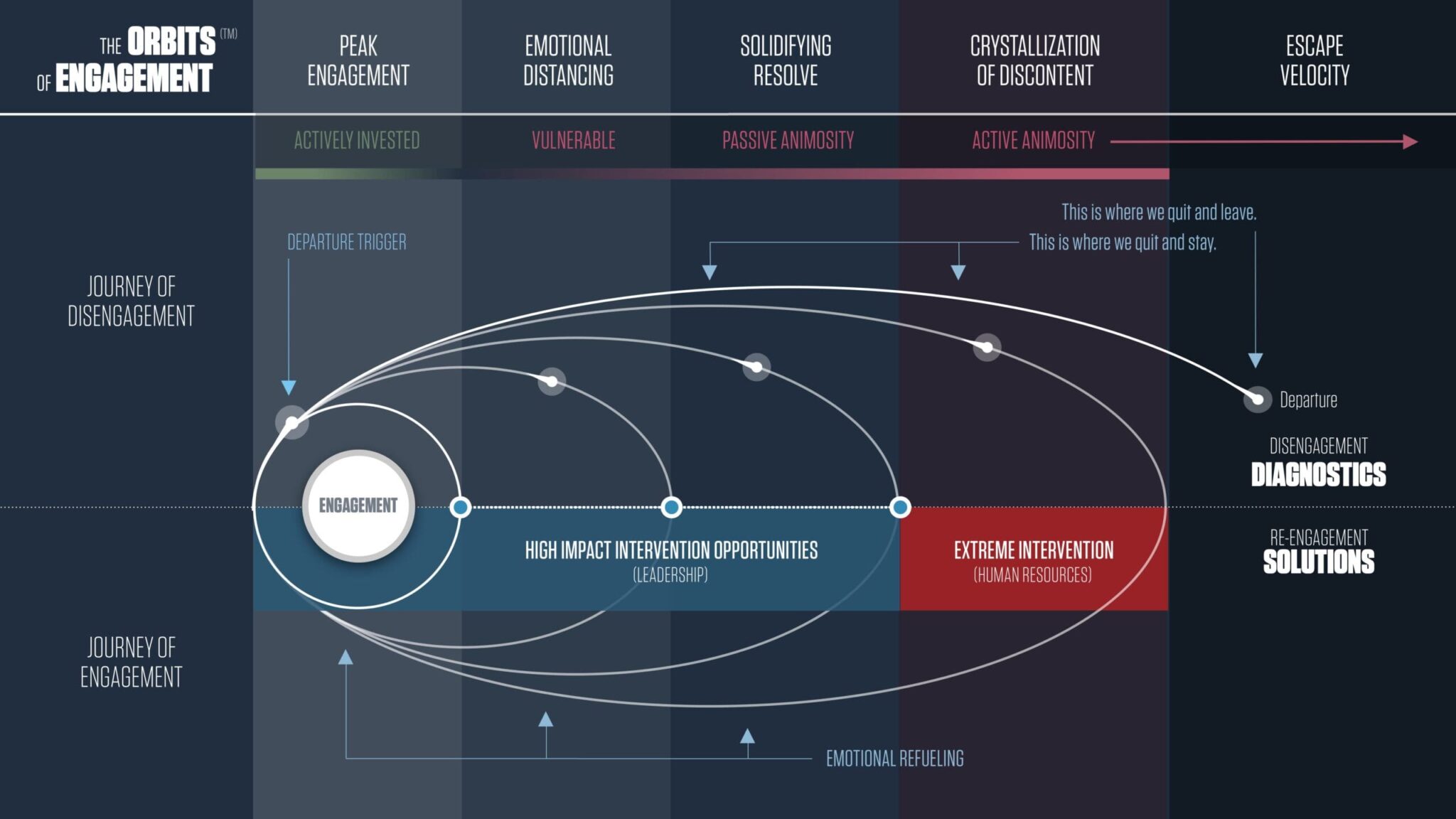
The Orbits of Engagement
This model is the outcome of our extensive research into the stages of disengagement we traverse as we move into and out of engagement around something we once cared about, whether it's at work, at home, in a relationship, or around an objective. Learn to identify these stages in yourself and those you lead.
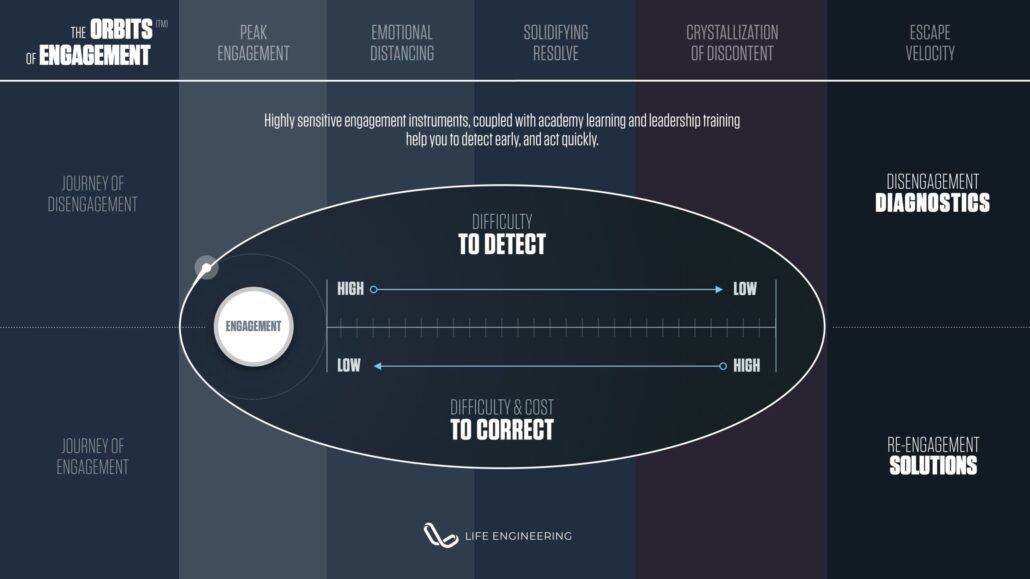
Orbital Solution Spectrum
Based on our critically acclaimed Orbits of Engagement, the Solution Spectrum dives into what is needed to systematize diagnosing disengagement and what you can do to respond and react early, whether that's to re-enter the orbit or to make a conscious decision to move on.
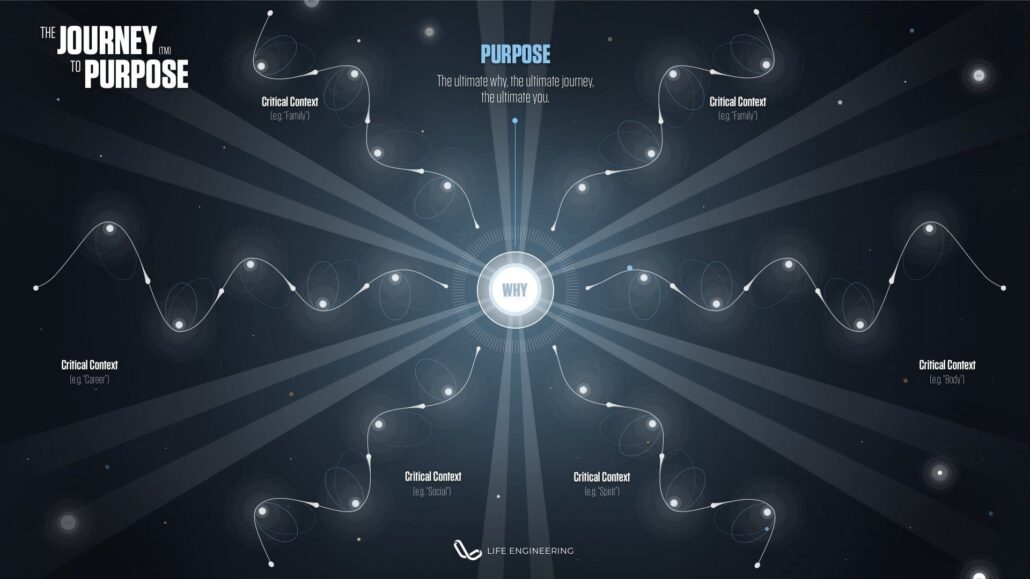
The Ultimate Journey To Purpose
Our lives, teams and organizations must optimize for not only one journey, but rather successfully bring together many simultaneous journeys in order to succeed. This training builds off the Orbits of Engagement and the Journey to Purpose to create culminating clarity around the journey you are on.
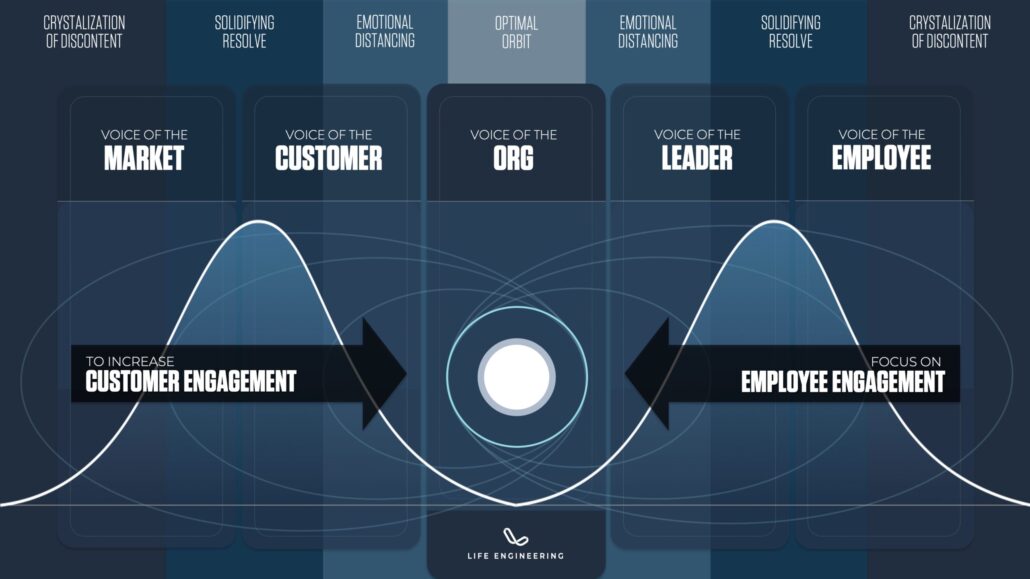
Customer Engagement Synergy
This training creates an understanding of how to create highly engaged customers through a highly engaged workforce. Connected to both the Orbits of Engagement and the 5 Voices of the Organization, you'll understand the synergy of these and how to optimize for market performance.
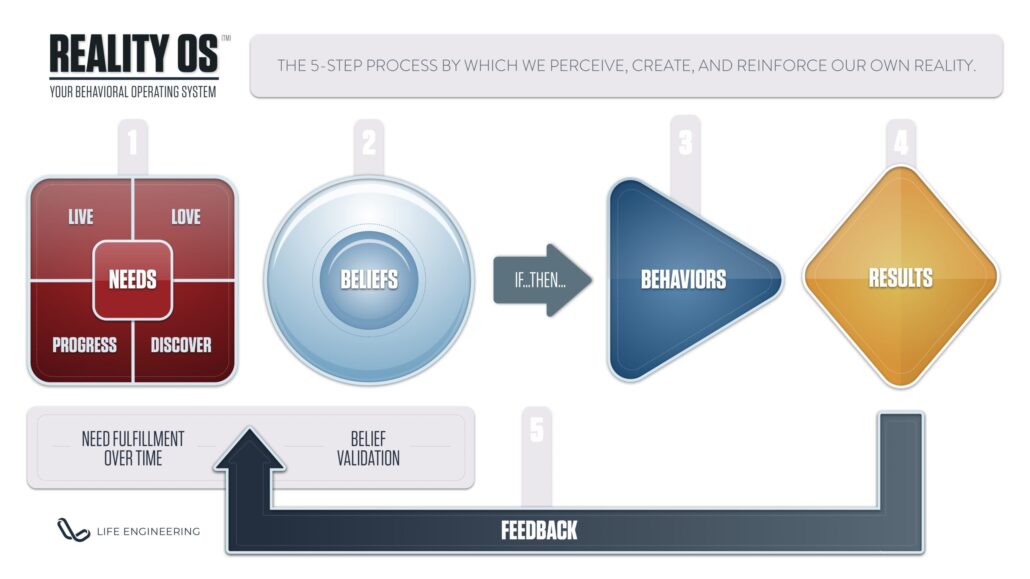
Reality Operating System
Our reality individually, as a team, or as an organization is the result of a very predictable process. When you understand this process, you gain more control and influence over the outcomes you desire. This training covers a 5-step process by which we perceive, create, and reinforce our own reality.
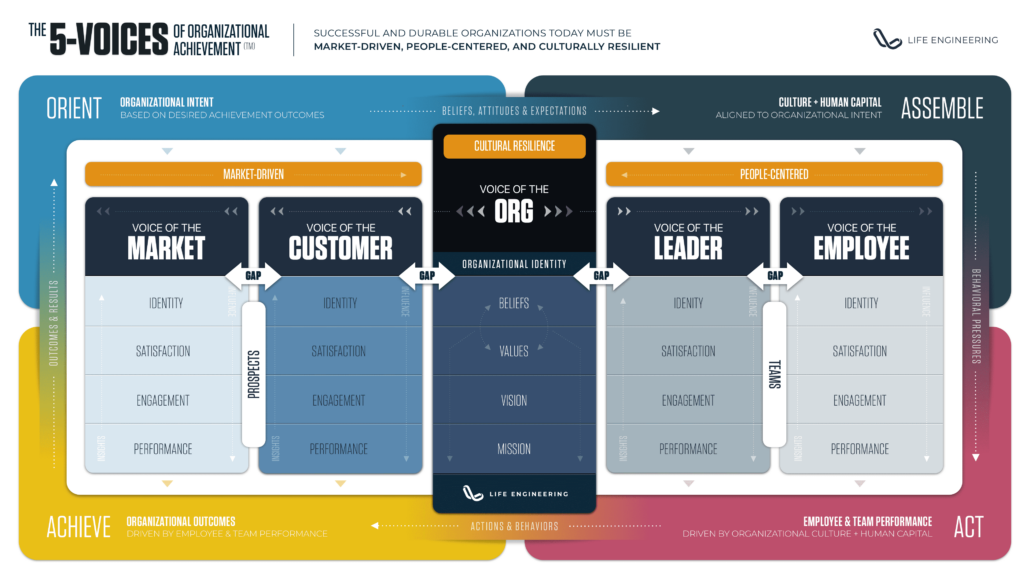
5 Voices of the Organization - For Business Leaders
For an organization to be healthy and create internal and external performance, it must learn to listen to, have empathy for, engage, and satisfy 5 separate but synergistic voices. This training gives you a foundational framework for understanding these voices and creating a plan to optimize for them.
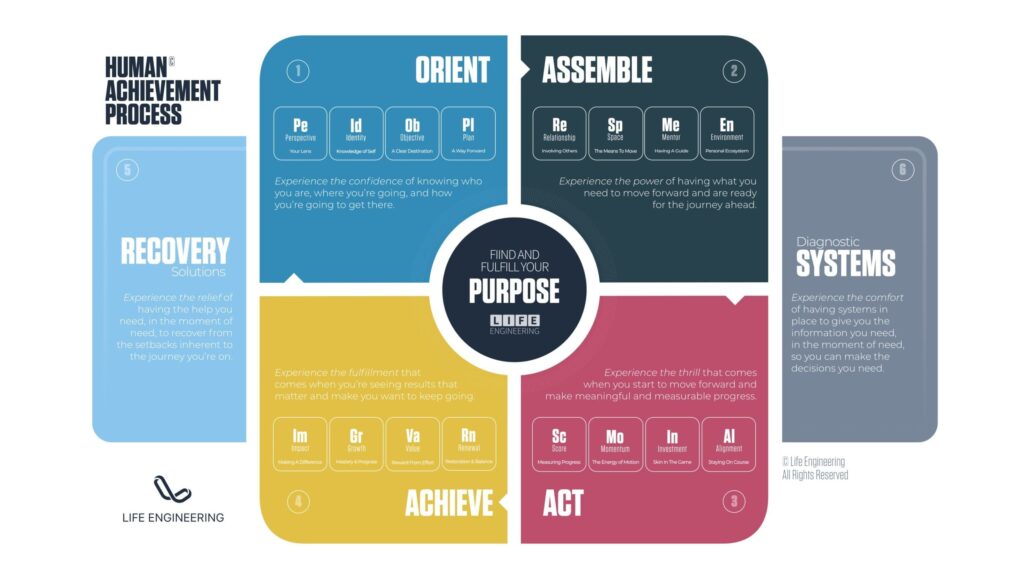
Human Achievement Process
In gamification and performance alike, the 16 Elements most effectively are ordered into 4 primary pillars. These pillars are the cornerstones of progress on your journey. That journey is stabilized by the two wing-pillars. Together they form a process of continuous improvement to keep you moving forward.
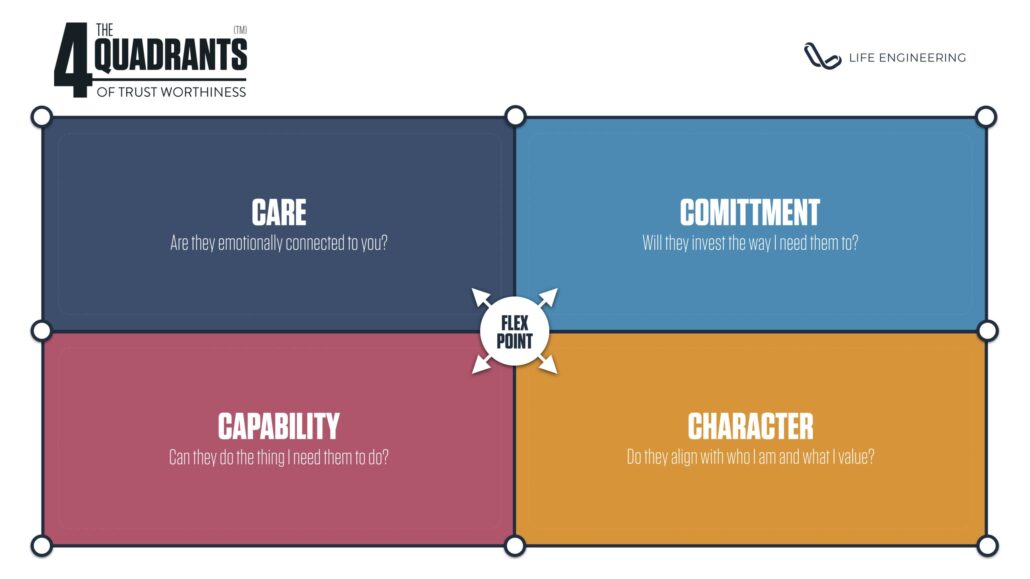
The 4 Quadrants of Trust
In order to create trust in ourselves, in our teams, in our organization, or to create trust in our customers and the market, we must be trustworthy. This training covers the 4 primary components of trustworthiness and creates clarity and understanding of what is often a give-and-take relationship between them.

Engagement Cycle
The path we take through life, whether as an individual, or as a team, or as an organization, follows a highly proven and predictable process. In this training, you'll learn to identify the stages of this process and what you can do to optimize that journey to increase your probability of success.
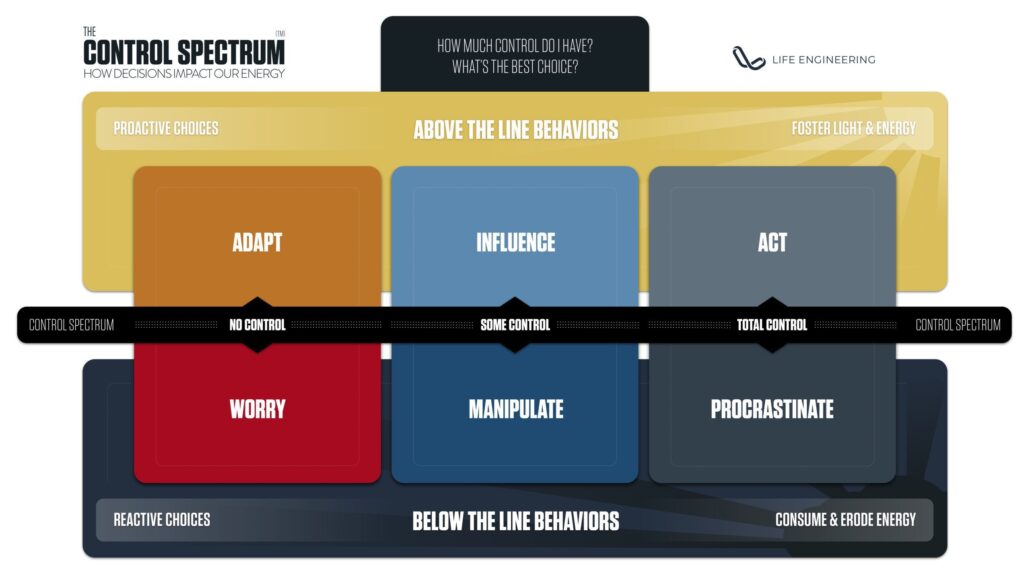
The Control Spectrum
As we live our lives, at home or work or in any other context, we are constantly presented with scenarios where we are forced to make a decision of how to respond and react. Some decisions create energy and move us forward, some erode energy and hold us back. This training helps you identify the difference.
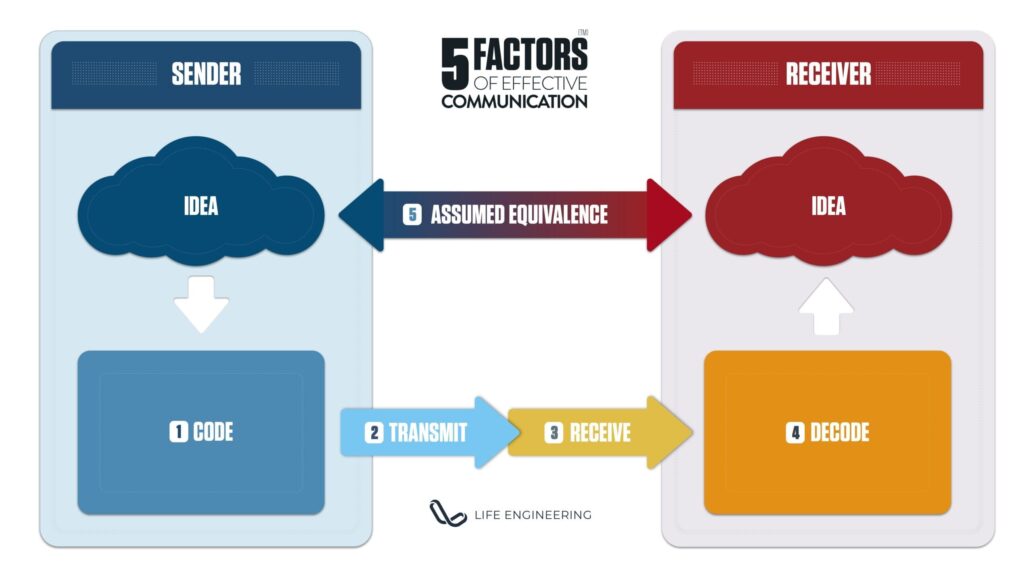
5 Factors of Effective Communication
For us to be successful in life, in our teams, in our organizations or in the market, we must be effective communicators. There are 5 areas of communication where we typically mess up. This training helps you identify the 5 aspects that you need to get right in order to be a highly effective communicator.

